The word Meteora means literally ‘hovering in the air’ and of course brings to mind the word meteor. What created this rare geological phenomenon is one of the mysteries of nature and there are many theories though they remain theories and none have been proven. But as amazing a marvel of nature as these giant rocks are, the buildings on the top of these ,seem just as miraculous and make Meteora one of the most spectacular places I have ever visited.
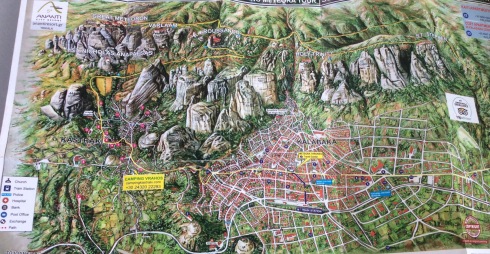
Serene, spiritual, magical, mystical, extraordinary, breathtaking, immense, inspiring, impressive. These are only some of the adjectives that come to mind, in an attempt to describe the Meteora phenomenon.




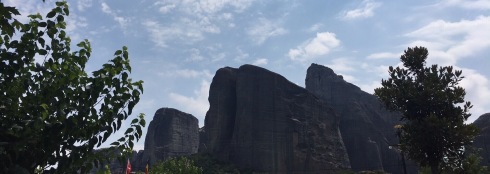
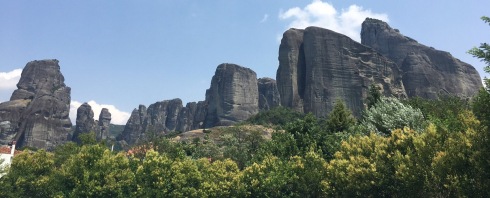
“It is a unique experience of nature’s grandeur in conjunction with history, architecture and man’s everlasting desire to connect with the Divine. From the early Christian times, the Meteora vertical cliffs were regarded as the perfect place to achieve absolute isolation, to discover peace and harmony and, thus, to support man’s eternal struggle for spiritual elevation.” Unquote.
Meteora is a truly inspiring and sensational setting of overwhelming rock formations and an exquisite landscape. It is a pilgrimage to a holy place for all Christians around the world. Meteora has become a preservation ark for the 2000-year-old Christian Orthodox creed.
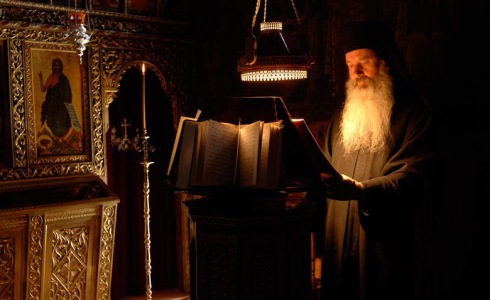
The gigantic rocks of Meteora are perched above the town of Kalambaka, at a maximum height of 400 m (1200 ft). The most interesting summits are decorated with historical monasteries, included in the World Heritage List of Unesco. Only 6 of them have made it through the centuries, from an initial estimated number of 24. Mostly dating to the 14th and until the 16th century, these monasteries were built by monks who were previously hermits in the area, living in individual caves. Once united, these monks took months and years to carry the construction material to the top of rocks, using ropes, folding ladders, nets and baskets, and with much determination.
They then proceeded to build monasteries in awesome positions.The monasteries had no access to electricity and water until recently and the monks and nuns have been long trained in obtaining efficiency.
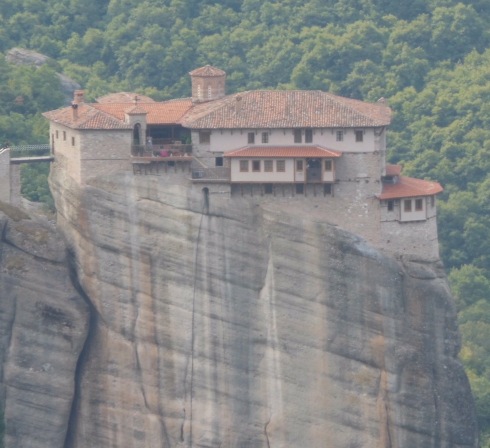
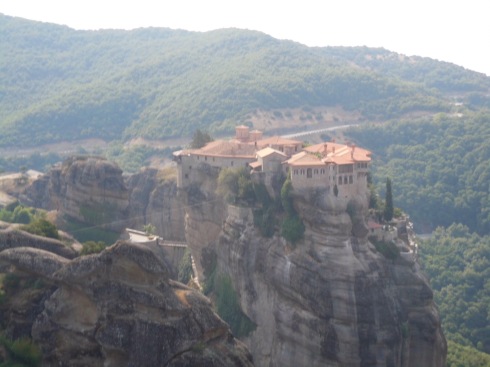
For the purposes of brevity, this blog will focus on The Great Meteoro Monastery.
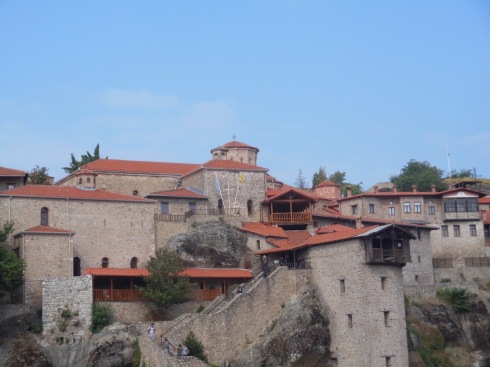
It was founded by Saint Athanasios the Meteorite who was the first founder of the monastery and the organizer of the systematic koenovion. For this reason, the foundation of this monastery is considered to be a turning point, or even better, the beginning of the organized monastisicm in Holy Meteora. Hosios Athanasios was born around 1302 in the medieval town of New Patras, today’s Hypati and his lay name was Andronikos.
The main cathedral in the central courtyard is embellished with beautiful 16th century frescoes.



It is beautiful and amongst other sights, the Ossuary and Carpenters’ workshop astonish you…an obvious sense of place and history.
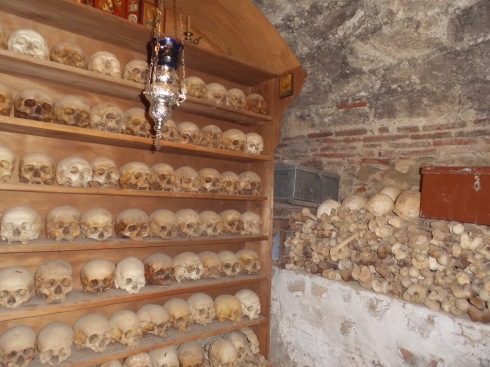

Tastefully kept gardens and balcony viewpoints are some of the other highlights, not to mention the bells, of which there are many.

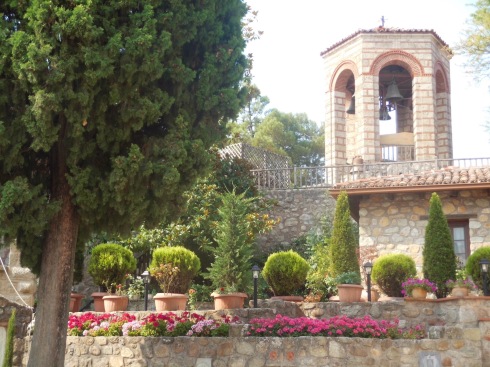
The area of Meteora was originally settled by monks who lived in caves within the rocks during the 11th Century. But as the times became more unsure during an age of Turkish occupation, brigandry and lawlessness, they climbed higher and higher up the rock face until they were living on the inaccessable peaks where they were able to build by bringing material and people up with ladders and baskets and build the first monasteries. This was also how the monasteries were reached until the nineteen twenties and now there are roads, pathways and steps to the top. There are still examples of these baskets which are used for bringing up provisions. Back in the days when these baskets were the only way to get to the monasteries a nervous pilgrim asked his monk host if they ever replace the rope. “Of course we do” he replied.”Whenever it breaks”, which I am sure put the guy at ease. But now you don’t have to worry about ropes breaking since the monasteries are all connected by a series of pathworks and a winding road.
During the Turkish occupation it was the monasteries which kept alive the Hellenic culture and traditions and were not only relgious centres but academic and artistic as well. It is believed that were it not for the monasteries, Hellenic culture would have disappeared and modern Greece would be a reflection of the Ottoman empire with little knowledge of its roots and history. The monasteries attracted not only the deeply religious, but the philosophers, poets, painters and the deep thinkers of Greece. Today only six of the monasteries are active.
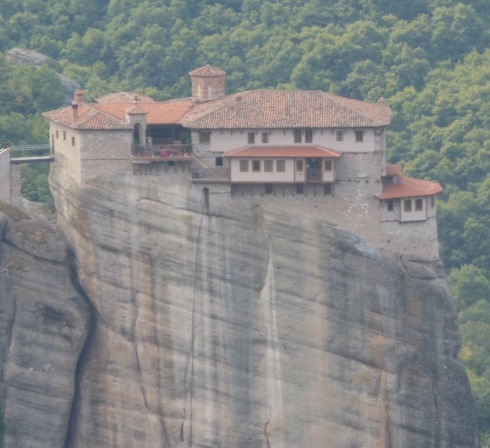
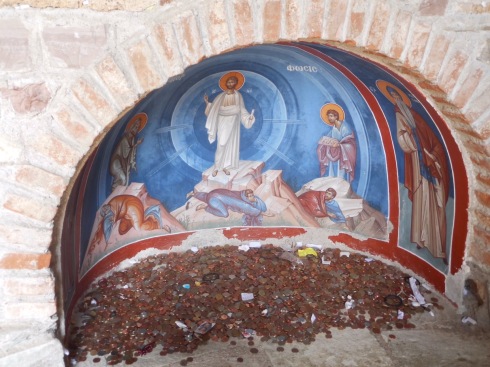
The Greek Orthodox Church is fiercely patriotic, this is really apparent in the Monastery museum, where, in a section displaying original lithographs and posters , the descriptions of battles against various foes, become somewhat jingoistic!
On a practical note, ” Meteora Tours”, offer 1/2 day trips for € 25.00, but we used the local bus, ( an air conditioned coach )which stopped outside the Campsite – € 3.20, return and €3.00 to visit any of the individual monasteries. Given the heat, a visit to 3 monasteries, in a day, would save the soul of any pilgrim!
“Look through any window,

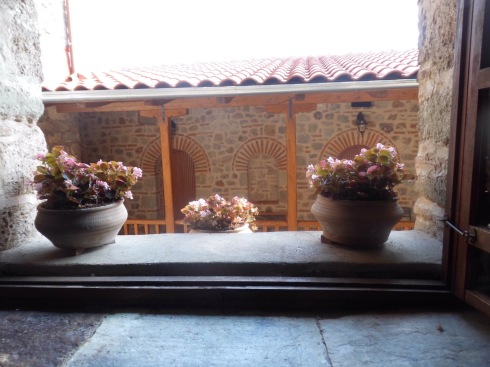
Thank you for this blog post. l would never have known of these monasteries had I not read your blog. Again, thank you for enlightening me.